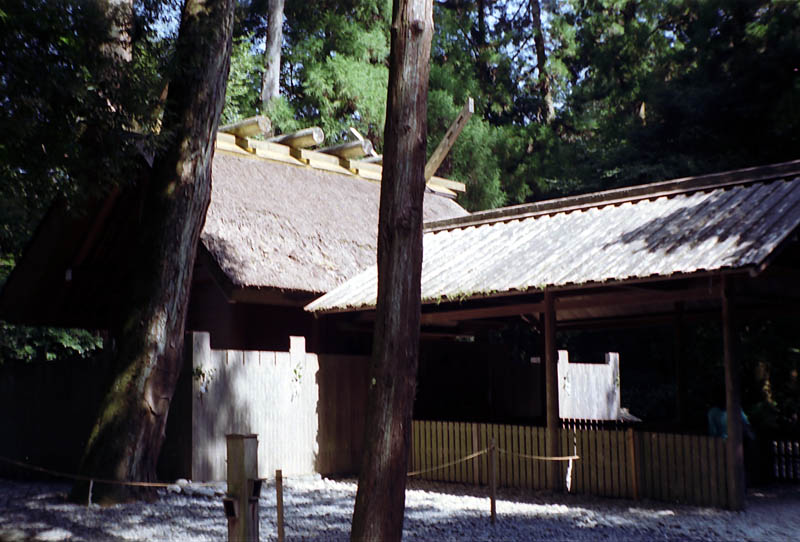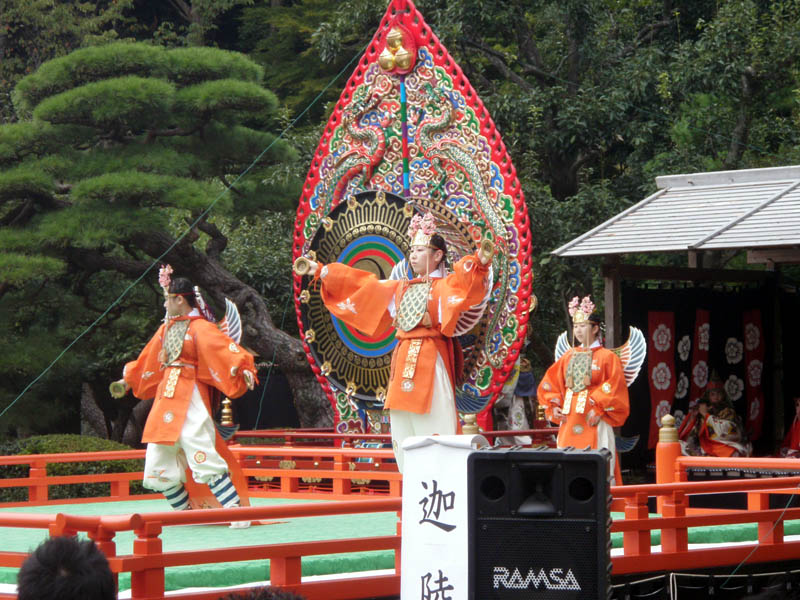
Ise is a small town, but a very important place for the Japanese nation and the Japanese state. There is Ise Grand Shrine, which is the most sacred place in Japan. The Divines worshipped are Ama-terasu (the Queen of the Sun) and Toyo-uke (the Mistress of Foods). Ama-terasu, literally ‘Shining one in the sky’, is the ancestor of the Imperial Family. She lives in Takama-ga-hara, ‘The field in the high sky’, and her grandson, Ninigi, came down to the earth. His grandson, Iware-hiko, was the first Emperor of Japan. Toyo-uke, is the chef de cuisine of Ama-terasu. She is a guardian deity of all the farmers of Japan.
I held a four-day workshop of meditation there form September 19 to 22. Before the workshop, I went to Gekû, the Shrine of Toyo-uke, and after the workshop, to Naikû, the Shrine of Ama-terasu. Those buildings are rebuilt every twenty years. According to an ancient chronicle, the first rebuilding was performed in 690 C.E., the era of Emperor Jitô. I am very glad to know that the Japanese was continuing to reconstruct those buildings for more than 1,300 years, even in years of wars or in year of famines. They made them in totally the same shape to the ancient original; they use no nails, just putting logs together.

Eternity is not something unchanged here in Japan. As rice grows from seeds to grasses and reproduces new seeds, everything here is in eternal resurrection. Ise Grand Shrine is a symbol of this ever-changing eternity of agriculturalists.
When I went to Naikû after the workshop, I found ancient dances were performed. They are called gagaku, literally ‘the graceful dance’. They are imported from the continent more than a thousand years ago. Some were from China, others were from other countries in Asia. Japanese preserved them without any change for incredible long times as a refrigerator. Of course they are transferred from teachers to students. This is also a Japanese image of eternity.

